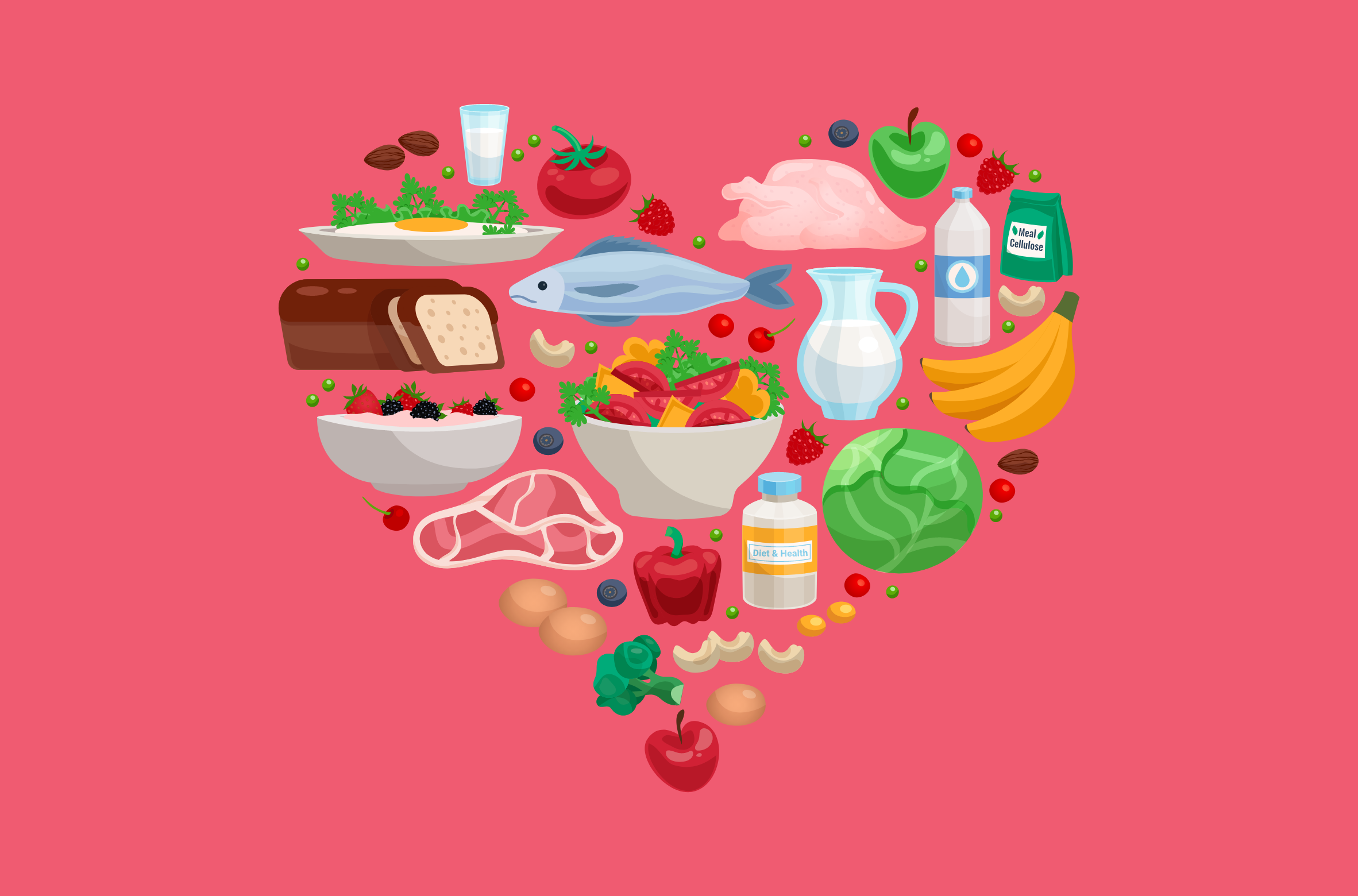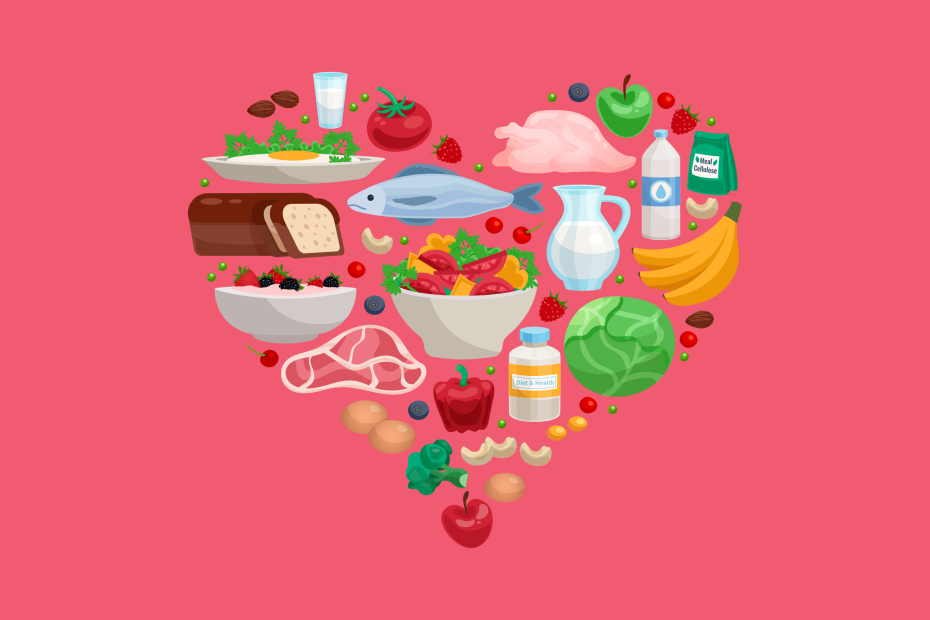Eat More Veggies and Fruit: Eating around 3 cups of vegetables and fruit each day can lower your risk of heart disease 30 percent, compared to those who eat less.
Make Fish Mandatory: Lower your risk of heart attack by eating two weekly servings of fatty fish such as salmon.
Get Into Greek Yogurt: Eat plain Greek yogurt to protect your arteries and reduce heart disease risk.
Enjoy, but Limit Healthy Fats: Before you drown your veggies in butter, know that too many saturated fats do increase heart disease risk. Know the pros and cons of healthy fats, where to find them, and how to eat them for heart health.
The heart beats around 115,000 times a day and will pump millions of gallons of blood throughout an average lifetime. This mighty organ goes about its business circulating your blood, which delivers oxygen and nutrients to the tissues of your body, and removes carbon dioxide and other waste from your entire body. How long your ticker keeps on ticking depends on the choices you make, the actions you take, and even how you think and feel. Good nutritional choices and eating habits build a strong foundation for a healthy heart. Here are some of the best diet strategies you can incorporate now to keep your heart—and you—healthy:
Eat More Veggies and Fruit:
It’s reasonably safe to assume that you don’t get enough because nine out of 10 Americans do fall short when it comes to eating fresh (or frozen) produce. Veggies and fruit protect your heart. The Department of Health and Human Services dietary guidelines recommends 3 to 5 servings of vegetables and 2 to 4 servings of fruit per day. In fact, in a recent review of more than 90 studies covering over a million people, researchers found that those who ate around a total of 3 cups of vegetables and fruit per day had roughly a 30 percent lower risk of heart disease and stroke than those who ate little or no fruits or vegetables.
Are you catching the emphasis on the “and fruit” in italics? Fruit has gotten a bit of a bad rap lately. The review published in 2017, found reductions in heart disease for those who ate more green leafy vegetables, cruciferous veggies, and salads—but they also found better heart health for those who ate more apples, pears, and citrus fruits. With the low carb revolution, many people think that fruits should be nixed altogether, and it just isn’t true. While the emphasis should lean toward more veggies than fruit, do include at least two servings of fruit daily. A serving of fruit can be a medium-sized apple, banana, orange, or pear, or a cup of berries, chunked pineapple, or sliced mango. In addition, aim to get at least 2 and to 3 cups a day of vegetables and mix them up. The more colorful, the better. Not only will you be less bored with more variety, you’ll cover more of the nutrient rainbow that’s offered in produce. If you’re looking for more vegetable ideas, the Center for Science in the Public Interest puts out an extensive vegetable rating chart. Pomegranates, sweet potatoes, watermelon, and butternut squash are also rich in nutrients. Or, even easier, cover half your plate at lunch and dinner with mostly vegetables and some fruit. These are foods that are typically low calorie, high fiber, and high nutrition—you really can’t go wrong.
To get the most nutrition and flavor from your produce, avoid canned or jarred fruits and veggies, and if you buy frozen, check that the product is sugar and salt-free. Make sure to wash all produce with a clean produce brush. This includes washing oranges, squash, melons, and other produce before you cut it. Don’t soak fruit and veggies in water because some nutrients can leak out. Get more antioxidants and nutrients by trimming away as little skin as possible on items with edible skin. If you are cooking vegetables in water, use as little as possible and cut the items in larger pieces to retain more nutrition. Cook veggies quickly and only until tender.
Make Fish Mandatory:
The omega-3 fats in fish such as salmon, lake trout, mackerel, herring, tuna, and sardines can reduce inflammation in your entire body, which keeps your blood vessels healthy and reduces the risk of sudden-death heart attacks. Your heart doesn’t have to work as hard when you keep your blood vessels healthy. Plus, there’s some research that indicates that the omega-3 fatty acids in fresh fish seem to have a stronger heart benefit than only taking omega-3 supplements or eating other omega-3 foods such as flaxseed, walnuts, canola oil, and soybean oil. Improve your heart health by including two weekly servings of fish (a serving is about 3 ounces or the size of a deck of cards).
If you aren’t crazy about the fishy taste of fish, try milder versions such as halibut, flounder, tilapia, or sea bass. Another technique for those who aren’t fish fans is to break out the grill. Grilling gives fish a great smoky flavor. Also, try recipes that include a generous dose of flavor. Spices such as curry, cayenne pepper, or ginger will provide more of a punch to flavors while hiding that fishy taste.
Get Into Greek Yogurt:
The unsweetened type is a perfect swap for sour cream, it makes delicious creamy dips for veggies (just add a little dill and a squeeze of lemon), or use a dollop as topping for berries or other diced fresh fruit. Greek Yogurt has gut-friendly probiotics that can protect your heart, according to a study in the American Journal of Clinical Nutrition. The researchers found that women who ate just less than half a cup of yogurt every day had healthier arteries than those who didn’t. Plus, unsweetened Greek yogurt has twice the protein as regular yogurt. Stick to the low fat or nonfat varieties for the best heart health.
Enjoy, but Limit Healthy Fats:
Today, the media has a lot to say about the health benefits found in saturated fats such as coconut oil, red meat, whole-fat dairy products, and butter. But, before you drown your veggies in any type of fat, know that too many saturated fats do increase heart disease risk. Maybe you’ve read or heard that only some “bad” cholesterol (the small-dense-LDL) is actually bad, while there’s this other category of large fluffy LDLs that are harmless, but the science doesn’t hold that up. Both types of LDLs increase fatty plaques in the arteries, which increases heart disease risk. Instead, choose foods low in saturated fat such as those in seeds, fatty fish, avocados, and olive oil, and avoid processed meats, and limit red meats and other saturated fats. Finally, remember that a little fat goes a long way. Fats rank at nine calories per gram, while protein and carbohydrates have four calories per gram. The American Heart Association recommends three servings of healthy fat per day. One serving of fat equals one tablespoon of olive oil or nut butter or two tablespoons of nuts or seeds.
Avoid Foods that Hurt Your Heart:
Sugars and trans-fats are the super-villains here. This is especially true for sugary beverages (including fruit juice) and any food that lists “partially-hydrogenated” in its ingredients. The calories in liquid sugars aren’t computed by your body the way that solid food is registered, which means that drinking sugary beverages can lead to overeating. Men who drink sugar-sweetened beverages have a 20 percent higher risk of heart disease than those who don’t, according to a study from Harvard University researchers. A related study found that women had a similar increase in heart disease risk when drinking sugary beverages.
When it comes to trans-fats, processed foods often contain artificial fats such as partially hydrogenated oil. Eating these fats is like eating plastic. They clog up blood vessels and arteries that carry blood to and from your heart. Refined and liquid sugars and trans fats increase the risk of heart disease, avoid them whenever possible.
 share
share



